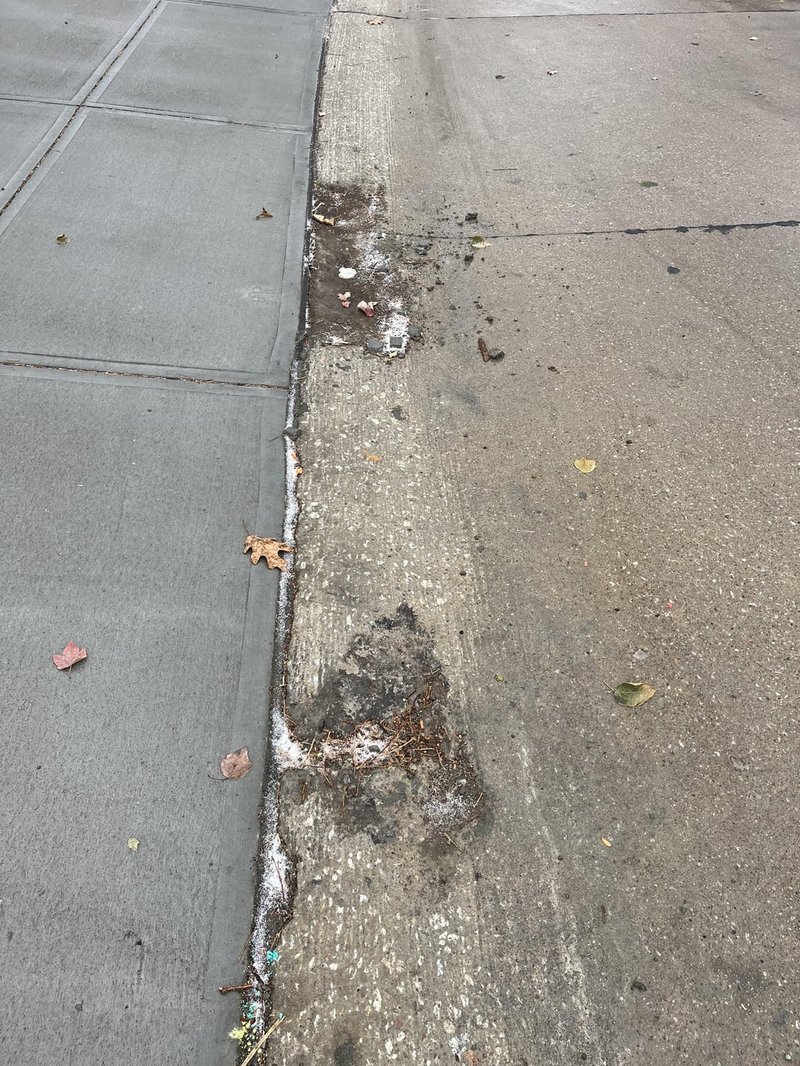
Here’s the thing: your threshold is a hardworking part of your home, but it doesn’t get the love it deserves. Every time someone walks in, drags in a suitcase, or the family pet charges past, the screws and anchors that hold this thing in place take a beating. Over time, no matter if your threshold is wood, aluminum, or composite, constant pressure and movement will loosen it up. Whether you have a basic wood saddle or a fancier aluminum model, the repair process is surprisingly similar—and it doesn’t require any tricky code or fancy tools.
Let’s break down how you can repair a loose threshold so it’s snug, secure, and ready for many more years of high-traffic living. Don’t worry; even if you’ve never touched a drill in your life, I’ll walk you through each step.
What Causes a Threshold to Loosen?
Thresholds loosen over time mainly because of *repeated pressure from foot traffic*. Think of your threshold as the doormat’s tougher, more technical cousin—the one who actually handles all the weight. Every step flexes the board or strip, slowly working the screws and anchors loose. If you live in a busy household or have a habit of wheeling suitcases or bikes through the door, this loosening happens even faster.
But foot traffic isn’t the only guilty party. Moisture is another big factor, especially with wooden thresholds. If water seeps in from rain, snow, or cleaning, the wood can expand, contract, or even start to rot at the edges—making it easier for fasteners to lose their grip. Aluminum or composite thresholds aren’t immune either; they might corrode or shift if the screws start to rust or the subfloor moves.
Sometimes, previous repairs make things worse. If someone tried to fix the threshold before using the wrong size screws, or skipped anchor plugs altogether, that patch job can fail quickly. Over time, the holes can get bigger—the screws no longer fit snugly, and the threshold starts rocking again.
So, if you notice your threshold is loose, you’re not alone and you’re definitely not at fault. It’s just part of a high-traffic home’s life, and it’s time for a refresh.
How to Tell If Your Threshold Needs Repair
You might be wondering, “Is it really that bad if my threshold wiggles a bit?” Let me explain what to watch for. The most obvious sign is a visible gap between the threshold and the floor. If you see daylight, dirt, or even feel a draft, that’s a red flag. Sometimes, the threshold will *move* when you push on it or step on one side, rocking like a seesaw—that’s another clear hint.
Other signs can be sneakier. If the screws seem to rise above the surface or you hear a creak every time someone steps over, those noises are your house’s way of saying, “Fix me!” Even a *slight* looseness can let water, dust, or bugs sneak through, which is bad news for your flooring and subfloor.
If you’re not sure, try this: stand on the threshold and gently rock your feet back and forth. Does it move? Do you hear any clicking or squeaking? Even small movements mean the mounting hardware is no longer tight. If you’re ever in doubt, go ahead and tighten things up now—because ignoring the problem can lead to bigger (and costlier) repairs.
What Tools and Supplies Do You Need?
Getting ready to repair a threshold that’s loosened from constant foot traffic doesn’t require a truck full of gear. Here’s what you’ll need before getting started:
- Screwdriver or drill (with Phillips or flathead bits): Most thresholds are held in with screws—having a drill makes things faster, but a screwdriver works for small jobs.
- Replacement screws (wood or metal, depending on your threshold type): If the original screws are stripped or rusted, swap them out for new ones.
- Plastic wall anchors or wood plugs: These help provide a new grip if the old holes are too loose.
- Wood glue or construction adhesive: Helpful for filling stripped holes or giving extra hold.
- Utility knife and chisel: Good for cleaning out debris or trimming old caulk.
- Vacuum or brush: Dirt can interfere with the repair—clean the area before reinstalling.
- Caulk (optional): Seals gaps and blocks moisture after the repair.
Honestly, most of these items are probably already lurking in your toolbox or junk drawer. If you’re missing something—like plastic anchors or new screws—you can pick them up at any hardware store for just a few bucks. Having the right supplies from the start keeps things simple and helps you avoid those classic “Oops, I forgot…” moments halfway through.
Step-by-Step Guide: Repairing a Loose Threshold
Ready to dive in? Here’s a detailed, beginner-friendly guide for repairing a threshold that’s loosened from constant foot traffic:
1. Remove the Old Screws and Clean the Area
Start by unscrewing the old fasteners holding your threshold. Sometimes, they’ll come right out; other times, you may need to coax them with a bit of gentle force. Use your screwdriver or drill, and keep the old screws handy—they’re good for measuring replacements. If any screws are stripped or rusted, toss them.
Once the threshold is free, lift it up and vacuum or brush out any dirt, debris, or crumbled wood from the area underneath. If you see damaged wood or swollen spots, gently scrape or chisel out the worst bits so you’re working with a solid base.
2. Examine and Repair the Screw Holes
This is the secret sauce for a long-lasting fix. If the screw holes are tight and undamaged, you can reuse them. But if they’re loose or oversized, here’s what to do:
- For wood subfloors: Fill stripped screw holes with wood glue and tap in a small wood dowel or toothpick. Let it dry—this gives the screw something solid to grab.
- For concrete or tile floors: Use plastic anchors in the holes before reinserting screws. Tap them in lightly with a hammer until flush.
- If the hole is completely shot, drill a new hole a few inches away for a fresh start—just make sure you avoid electrical lines and check what’s underneath.
3. Reinstall the Threshold
Set the threshold back into place, lining up the existing holes (or your new ones). Hold it steady, then drive in the screws—hand tight if you’re using a screwdriver, or just until snug with a drill. Don’t overtighten, especially with wood, or you’ll strip the newly fixed hole all over again.
If you want extra strength, add a bead of construction adhesive or wood glue underneath before screwing it down. Wipe up any squeeze-out quickly. This step is optional but helps with thresholds facing heavy, constant traffic.
4. Seal the Edges and Test Your Repair
Once secured, check for any gaps around the threshold. Fill small cracks or joints with a bit of flexible caulk—this blocks drafts, moisture, and bugs from sneaking in. Smooth the caulk with your finger (or a damp cloth), then let everything dry for a few hours.
Finally, give your repair a test: step on the threshold, rock your feet, and listen for noise or movement. If it feels solid and quiet, you’ve aced the job!
Should You Replace or Repair Your Threshold?
You might be wondering if it’s worth all this effort, or if you should just buy a new threshold instead. Honestly, unless your threshold is *cracked*, rotten, or totally warped, a repair is almost always the smartest move. Most loosened thresholds just need a fresh grip, not a full replacement.
Replacing a threshold takes more time—you might need to cut new materials to size, deal with messy caulk, and possibly repaint or re-stain the area. Repairs are tidier, faster, and much cheaper. Think of it like updating your remote’s battery instead of buying a whole new gadget: same result, way less hassle.
Still, if your threshold is truly falling apart or has mold damage, don’t risk it—swap it out for a new one. You’ll want an exact match for size and style, and you’ll follow a similar installation process using the steps above.
How to Prevent Thresholds from Loosening Again
Now that you’ve fixed your threshold, how do you keep it snug for the long haul? Start by using the right hardware. Stainless steel or coated screws resist rust and hold better than plain ones, especially in wet climates. Plastic anchors or wood dowels reinforce the grip if you ever need to re-tighten things.
“Reset” your threshold once a year—just give the screws a quick tighten and check for moisture or dirt buildup. If your entryway is exposed, consider adding a thin bead of caulk every few years to block water.
If you have a universal-style aluminum threshold, check that all components are seated correctly and not flexing. Some models use hidden clips or extra mounting points—don’t be afraid to read the little code (installation instructions) that came with your brand to make sure you’re not missing a trick.
Most importantly, keep the area clean. Sand, dirt, and debris act like sandpaper on your screws and hardware, so a quick sweep every week helps a ton.
Common Troubleshooting Mistakes to Avoid
It’s easy to rush a repair and end up with a threshold that’s still loose—or worse, one that’s now impossible to remove. Here are a few classic mistakes to watch out for:
- Using the wrong screw type or size: Too short, and they won’t hold; too long, and you might hit wires or pipes.
- Skipping anchors or dowels for loose holes: This almost guarantees you’ll be repairing the same spot again soon.
- Over-tightening the screws: That crunching sound means the wood is splitting or the anchor is stripping out—stop as soon as the screw is snug.
- Ignoring moisture issues: If you see rot, mold, or water stains, deal with those first before reattaching the threshold.
If you follow each step with care and avoid shortcuts, your threshold will stay secure and keep handling all the foot traffic you (and your pets) can throw at it.
Alternatives to Standard Threshold Repair
If you’re dealing with really old hardware or a tricky doorway—maybe your floor is uneven, or a standard repair just isn’t working—there are some alternatives worth trying. One popular fix is to install a universal or adjustable threshold. These are built to flex or expand a little, so they handle more movement and work in homes where the floor isn’t perfectly flat.
You could also add extra side brackets or hidden mounting points for extra strength. Some folks seal the underside of the threshold with heavy-duty adhesive for a semi-permanent, “set it and forget it” hold. Or, if you’re not comfortable with tools, a quick call to a handyman is a perfectly valid option—no shame in outsourcing when your to-do list is long.
The key is choosing what fits your comfort level and your home’s needs. Whatever option you pick, you’ll be stopping that annoying wiggle in its tracks.
The bottom line: repairing a loosened threshold from constant foot traffic is a beginner-friendly project that pays off in comfort and safety.
A solid threshold doesn’t just look better—it keeps bugs out, your energy bills lower, and your entryway safe for everyone. With a bit of time, a few simple tools, and some patience, you can have your door’s threshold feeling rock solid again—ready to take on whatever the day (and your feet) dish out.
